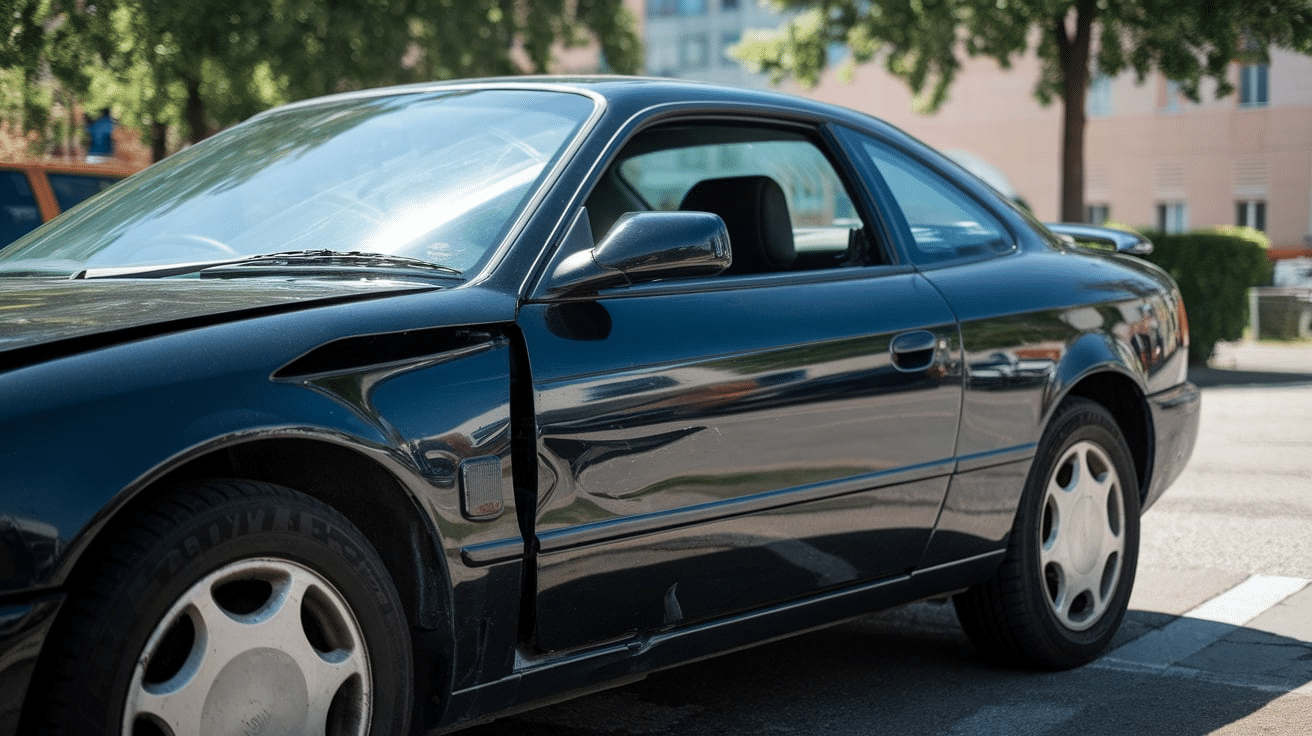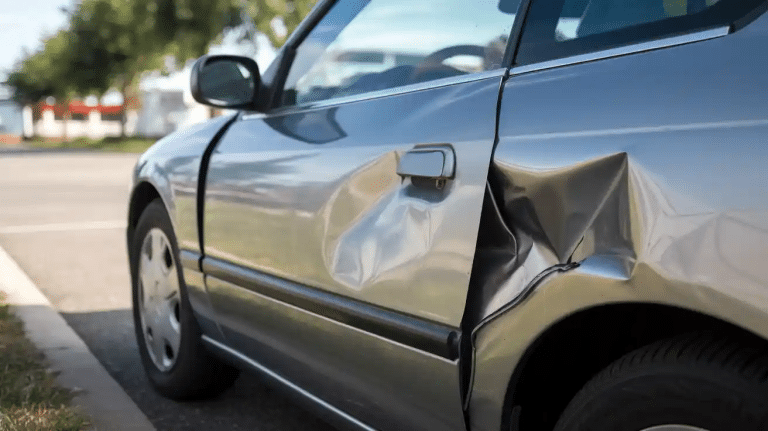When I first noticed a dent on my car, I couldn’t help but wonder, How much will this cost to fix?
It’s a common question many of us ask when we spot a dent, whether it’s from a parking lot mishap or a hailstorm.
The truth is, the cost of fixing a car dent can vary a lot, depending on the size, location, and how it’s repaired.
In this blog, I’m going to break down everything you need to know about car dent repair costs.
I’ll cover the factors that affect the price, the difference between DIY fixes and professional repairs, and even share some tips on how to save money.
By the end, you’ll have a clear idea of what to expect and how to handle that pesky dent.
How Much Does It Cost to Fix a Car Dent?
The cost to fix a car dent can vary quite a bit depending on several factors.
For small dents, you might pay around $50 to $150, especially if the repair is simple and doesn’t involve repainting.
Medium-sized dents could cost anywhere from $150 to $500, especially if there’s paint damage.
For larger dents or more severe damage, you could be looking at $500 to $2,000 or more, especially if the panel needs to be replaced or if it’s in a difficult-to-reach spot.
If the dent is small and the paint is still intact, you may be able to go for Paintless Dent Repair (PDR), which is cheaper and faster.
For bigger dents, traditional repair methods involving sanding, filling, and repainting are usually necessary, which can be more expensive.
Always get a few quotes to make sure you’re getting the best price for the repair.
Factors Determining Car Dent Repair Cost

Several factors can influence the cost of repairing a car dent. Understanding these factors can help you get a better idea of how much you might spend on fixing your dent.
- Size and Depth of the Dent: Larger and deeper dents typically cost more to repair. A small dent might only need a quick fix, but deeper or larger dents require more time and effort to fix, which raises the cost.
- Location of the Dent: Dents in hard-to-reach areas, like the edges of the car or on the body lines, can be trickier to fix and may cost more. Dents on flat surfaces like the hood or door are usually easier to repair.
- Paint Damage: If the dent damages the paint, repairs will cost more. PDR works for dents without paint damage, but cracked or scratched paint requires sanding and repainting.
- Repair Method: The method used to repair the dent affects the price. Paintless Dent Repair (PDR) is generally cheaper than traditional body shop repairs, which involve filling, sanding, and repainting the area.
- Type of Vehicle: The make and model of your car also play a role. Luxury cars, sports cars, or vehicles made with materials like aluminum tend to cost more to repair due to specialized parts and techniques.
- Labor Rates and Location: Labor costs can vary depending on where you live. Big cities tend to have higher labor rates than rural areas. Additionally, the repair shop’s reputation and experience can influence the price.
Knowing these factors can help you understand the cost breakdown and decide whether to repair the dent yourself or take it to a professional.
Paintless Dent Repair (PDR) vs. Traditional Repair Methods
Below, I’ve shared a quick side‑by‑side look at two common dent repair options. Use it to see how cost, time, and results compare at a glance.
| Factor | Paintless Dent Repair (PDR) | Traditional Repair |
|---|---|---|
| Method | Dent is massaged out from behind the panel without repainting. | Dent is filled, sanded, and repainted. |
| Cost Range | $50 – $150 (small dents) | $200 – $2,000 (large dents) |
| Time Required | 1 – 2 hours | 1 – 5 days |
| Paint Condition | Works only if the paint is intact | Needed when paint is scratched or cracked |
| Effect on Vehicle Value | Keeps original paint, helps resale value | Repaint can slightly reduce resale value |
While PDR is quicker and cheaper, it only works on small dents with good paint. For bigger or paint‑damaged dents, traditional repair is the sure fix, even if it costs more.
DIY Dent Repair vs. Professional Service: What’s the Best Option?
When you get a dent, you might wonder if you should fix it yourself or hire a professional. Let’s break down both options to help you decide.
DIY Methods
For small, shallow dents without paint damage, you can try fixing them yourself. Here are a few methods:
- Plunger: A plunger can sometimes pull out small dents.
- Boiling Water and Plunger: You can use boiling water to soften plastic bumpers, then push the dent out.
- Hairdryer and Compressed Air: Heat the dent with a hairdryer, then cool it with compressed air to pop it out.
These tools are cheap, but they might not work perfectly, and you could make the dent worse.
Professional Service
For bigger or deeper dents, or if the paint is damaged, it’s better to hire a professional.
They can fix the dent properly, and if it’s a small dent, they might use Paintless Dent Repair (PDR), which is quick and affordable.
Try DIY if the dent is small and the paint isn’t damaged. If the dent is big or the paint is scratched, it’s best to let a professional handle it. They’ll get it fixed the right way.
Does Insurance Cover Car Dent Repairs?
If you’re wondering whether insurance will cover dent repairs, it depends on the situation.
If the dent is from a car accident and you have collision coverage, your insurance will likely cover the repair cost minus your deductible.
For dents caused by things like hail or vandalism, your comprehensive coverage may help.
However, if the dent is small and the repair cost is close to or less than your deductible, it might be better not to file a claim. Filing a claim for minor damage could increase your premiums over time.
Always weigh the cost of the repair against your deductible to decide if it’s worth using insurance.
Should You Fix a Small Dent in Your Car?
You might be thinking about leaving a small dent in your car, especially if it’s not very noticeable. But there are a few good reasons why you might want to get it repaired sooner rather than later.
1. Impact on Resale Value
Even a small dent can affect your car’s resale value. Buyers are often picky and will factor in any visible imperfections, even if they’re minor.
A dent can make your car appear neglected, which may lead to a lower trade-in offer or selling price. Getting it fixed, especially before selling or trading in your car, can help you avoid losing money.
If you plan to keep the car for a while, fixing the dent now ensures that it stays in good shape, keeping its value intact for the future.
2. Prevent Rust and Further Damage
A dent might seem harmless at first, but if it cracks the paint, it can expose the metal underneath. This can lead to rust forming over time, which can cause even more damage.
Rust can spread and worsen the appearance of your car, and it might even weaken the metal, affecting the structural integrity.
By fixing the dent early, you can stop rust from forming and save yourself from having to deal with more expensive repairs in the future.
3. Visual Appeal
How your car looks can be important, whether for your own satisfaction or if you just like having your car look sharp. A small dent can stand out more than you think, especially when the car is clean and shiny.
Fixing the dent can restore your car’s smooth, flawless appearance, making it look almost new again.
If you’re not too bothered by the dent and it’s not in a prominent area, leaving it might be perfectly fine.
Tips to Save Money on Car Dent Repairs
Fixing a car dent doesn’t have to be expensive. Here are some simple ways to save money on the repair:
- Get Multiple Quotes: Always ask for quotes from different shops. Prices can vary, so comparing a few will help you find the best deal.
- Consider Mobile Dent Repair: Mobile dent repair services are often cheaper than traditional body shops. They can come to you, saving time and money.
- Use Insurance Wisely: For small dents, using insurance might not be worth it since it could raise your premiums. Consider paying out-of-pocket for minor repairs.
- Look for Discounts: Check for any promotions or coupons that might lower the repair cost.
- Fix Dents Early: The sooner you fix a dent, the less expensive it will be. Early repairs often qualify for cheaper methods like PDR.
These tips can help you save money while still getting your dent repaired properly.
Conclusion
Dealing with a car dent doesn’t have to be complicated or expensive.
After learning about the costs and methods, I know that smaller dents without paint damage can be fixed using Paintless Dent Repair (PDR), which is affordable and quick.
For larger or deeper dents, a full repair at a body shop is usually necessary, though it will cost more.
Before deciding to repair, always get a few quotes and consider your insurance’s deductible. If the dent is minor, you may even try a DIY fix.
Fixing dents early helps prevent rust and keeps my car looking good, while also maintaining its resale value. With the right approach, you can get the job done without spending too much.








